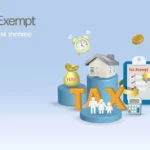Setting appropriate tax preparation fees isn’t just about numbers—it’s about establishing your value, building client trust, and sustaining your business. Whether you’re an independent tax professional or running a growing firm, having a clear, well-reasoned pricing strategy ensures both profitability and client satisfaction.
This guide will walk you through the key factors that influence tax prep fees, how to benchmark your rates, common mistakes to avoid, and tips to increase your revenue with confidence.

Content
Key Takeaways on Tax Preparation Fees
- Flat fee and hourly billing models each have unique benefits—choose based on your business style.
- Consider credentials, complexity, and client demographics when setting rates.
- Pricing transparency is critical—make sure clients understand what they’re paying for.
- Additional services like audit support and refund transfers can raise average per-client earnings.
- Annual pricing reviews help you stay aligned with industry trends and cost changes.
Factors That Influence Tax Preparation Fees
1. Type and Complexity of Return
Every return has its own story. A college student with a single W‑2 shouldn’t be priced the same as a self-employed client with multiple 1099s and a Schedule C.
Pricing suggestion:
- Basic W‑2 only: Low-tier pricing
- Schedule A (itemized deductions): Mid-tier pricing
- Schedule C or E (business or rental income): High-tier pricing
Adding complexity-based pricing tiers helps you capture the full value of your work while giving clients predictability.
2. Time Required Completing the Return
Time-based pricing can work well for tax consultants who offer planning, resolution, or advisory services. Even flat-fee models should be informed by the time it typically takes to complete certain types of returns.
Pro Tip: Use a time-tracking tool (like Toggl or TaxDome) for a few weeks to analyze where your time is going and adjust pricing based on data.
3. Your Credentials and Reputation
Clients expect to pay more for professionals with years of experience, credentials (like EA, CPA, or JD), or specialization in high-stakes tax areas. If you’re solving complex problems, managing audits, or offering planning, your pricing should reflect that.
Consider offering tiered packages:
- Basic tax prep
- Premium filing + audit support
- VIP tax + financial consultation bundle
4. Geographic and Demographic Considerations
Where your practice is located matters. Urban clients in high-cost-of-living areas are accustomed to higher fees. If you’re serving rural clients or price-sensitive communities, your rates should reflect local expectations—without undervaluing your time.
You can also align pricing with your client niche:
- High net worth individuals
- Gig workers or freelancers
- Small businesses or LLCs
Each demographic presents different needs and perceived value.
5. Operational Costs and Profit Margins
You need to account for more than your time—pricing must also reflect business expenses:
- Professional tax software
- Licensing and insurance
- Continuing education (CE credits)
- Office or home office space
- Admin staff or virtual assistants
By calculating your cost per return, you ensure your fees cover expenses and leave room for growth.
How Much Should I Charge for a Tax Return?
Use industry benchmarks as a guide, but tailor your pricing to your own circumstances. Below are updated fee estimates to help you build a starting framework:
| Return Type | Average Fee (Estimate) |
| 1040 – Simple Return | $180 – $220 |
| 1040 with Schedule A | $260 – $310 |
| 1040 with Schedule C (Self-Employed) | $400 – $550 |
| 1065 – Partnership | $600 – $850 |
| 1120 – Corporation | $700 – $1,000+ |
| 1040X – Amended Return | $150 – $300 |
| Additional State Return | $50 – $100 |
| Bookkeeping Add-On | $75 – $200/month |
| Tax Planning Session | $150 – $350/hour |
Note: Clients are often willing to pay more when services are bundled with added value, such as a financial review or document organizer.
Regional and Industry Comparisons
Tax fees vary by region, and knowing the local market helps you stay competitive:
- In New York City, itemized returns average $350–$450.
- In Texas, basic returns range from $150–$250.
- In California, business returns often exceed $1,000, especially for tech or real estate clients.
Organizations like the National Society of Accountants (NSA) or NATP regularly publish pricing surveys—use them to support your pricing decisions with data.
Enhancing Revenue beyond Basic Tax Returns
Looking to grow your practice without taking on more clients? Consider offering these add-on services:
Audit Protection Plans
Offer clients peace of mind with prepaid audit assistance. Fees typically range from $50–$100 and are rarely used, making them a profitable low-risk service.
Refund Transfers
Partnering with a bank provider lets clients pay your fee from their tax refund. You get paid faster, and clients don’t need to pay upfront—especially useful for low-income taxpayers.
Identity Theft Protection
Add fraud monitoring, credit checks, or tax ID theft services for a small monthly fee. Tax time is a great opportunity to offer this value-added protection.
IRS Representation
If you’re an EA or CPA, offering resolution services like offer-in-compromise, back tax filing, or penalty abatement adds a high-margin line of revenue.
Client Communication Tips: How to Present Your Fees
Transparent communication prevents billing disputes and helps clients understand your value.
Before the engagement:
- Use a standardized fee sheet or pricing menu.
- Explain what’s included in the fee and what is extra.
- Get signed engagement letters for complex returns or new clients.
During the return:
- If new forms or complications arise, explain the additional cost before continuing.
- Educate clients about value-added services like audit support or tax planning.
After the engagement:
- Offer a summary of work completed to justify fees.
- Ask for feedback to improve next season’s pricing model.
Final Thoughts on Tax Preparation Fees
Determining how much to charge for tax preparation isn’t just about matching what others charge—it’s about reflecting your unique value, expertise, and service quality. A thoughtful, well-structured pricing model communicates professionalism, sets expectations, and allows you to serve clients profitably and confidently.
Take the time to:
- Audit your current fee structure
- Compare against national and local benchmarks
- Adjust for complexity and service level
- Clearly communicate fees with clients
Whether you’re just starting or scaling up, smart pricing is essential to long-term success.
FAQs
Can I charge more for same-day or urgent returns?
Yes. Many preparers add rush fees of $50–$150 for expedited returns. Just be sure to explain the urgency premium up front.
Is it okay to raise fees for repeat clients each year?
Absolutely—just do it transparently. Consider annual adjustments of 3–5% to reflect inflation, tech upgrades, or new services.

Hi, I’m Dan and I write blogs for businesses. I’ve been doing this since 1994 and have written over 10,000 blog posts (and counting). I love writing about what you’re passionate about and how to make your business successful. So if you want to know more about blogging or social media marketing, just let me know!



